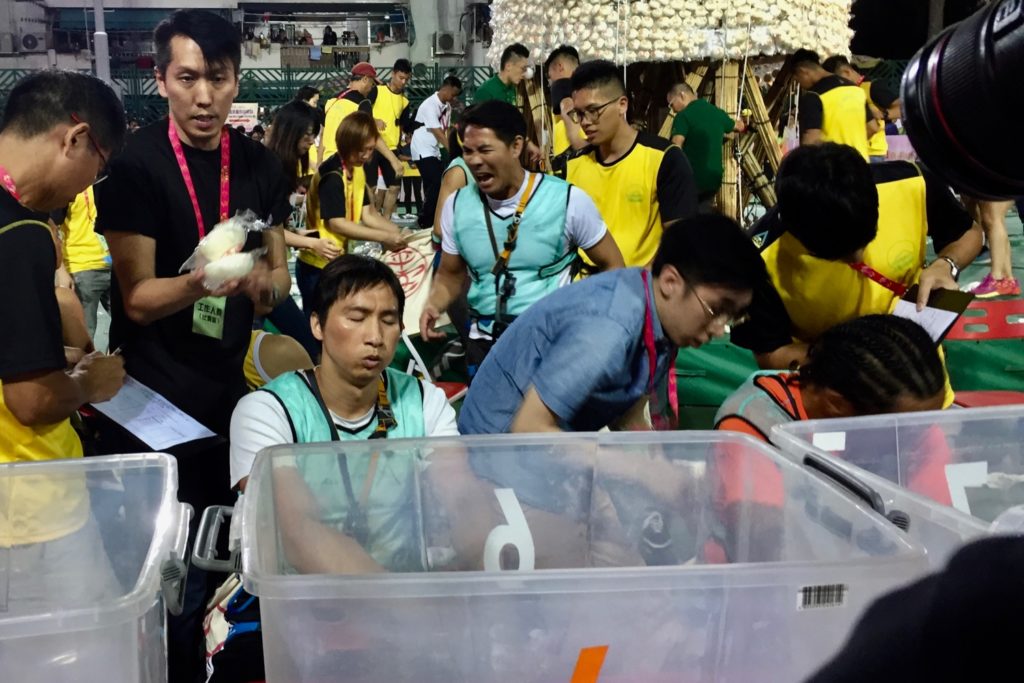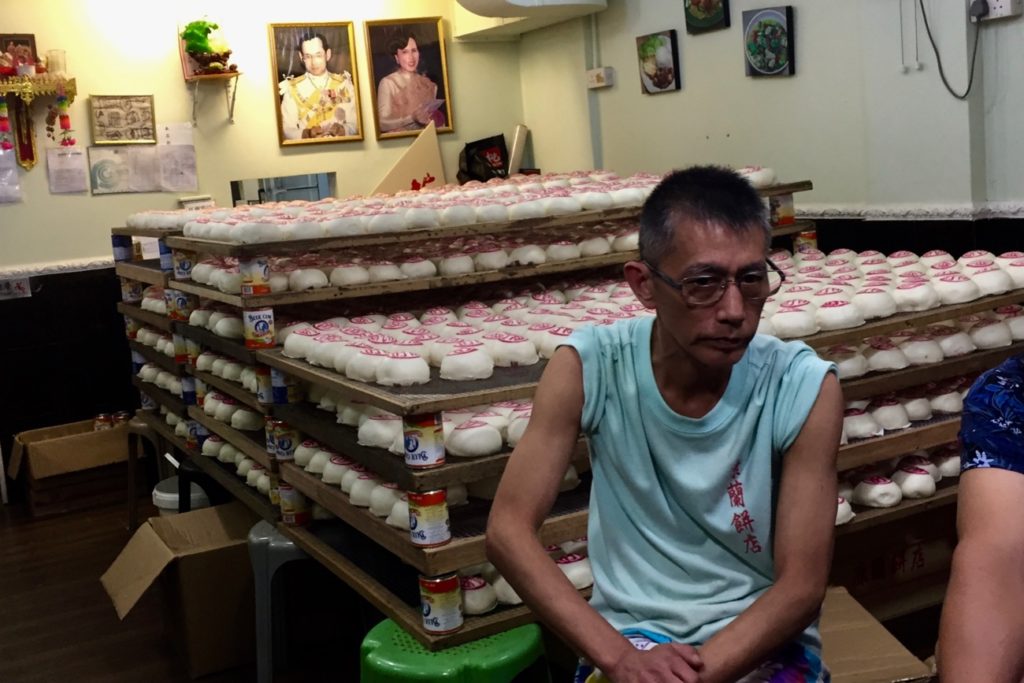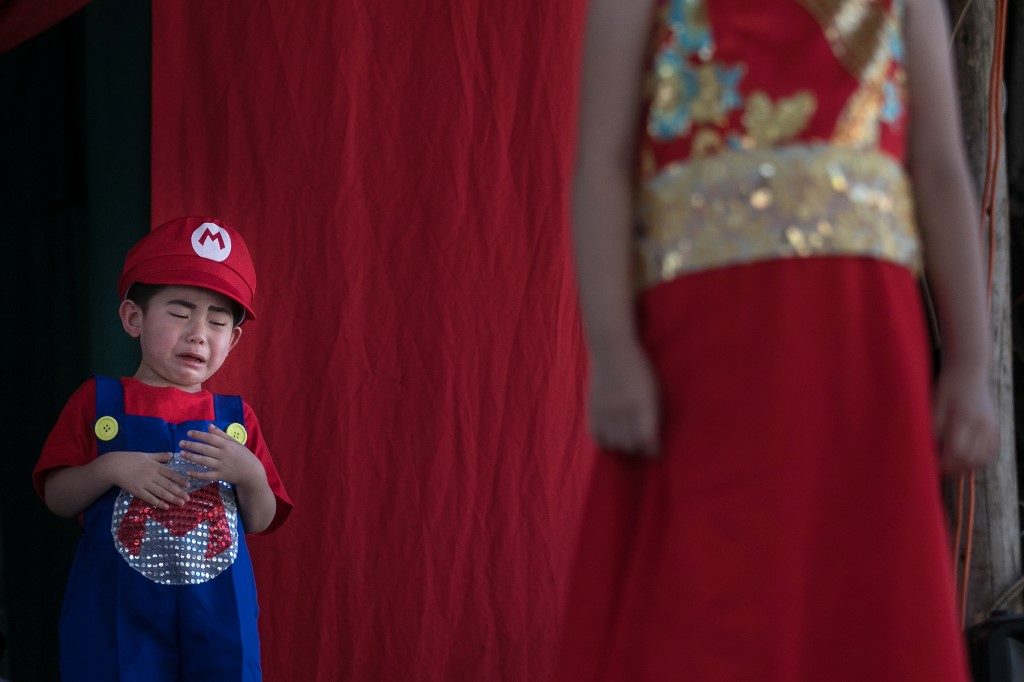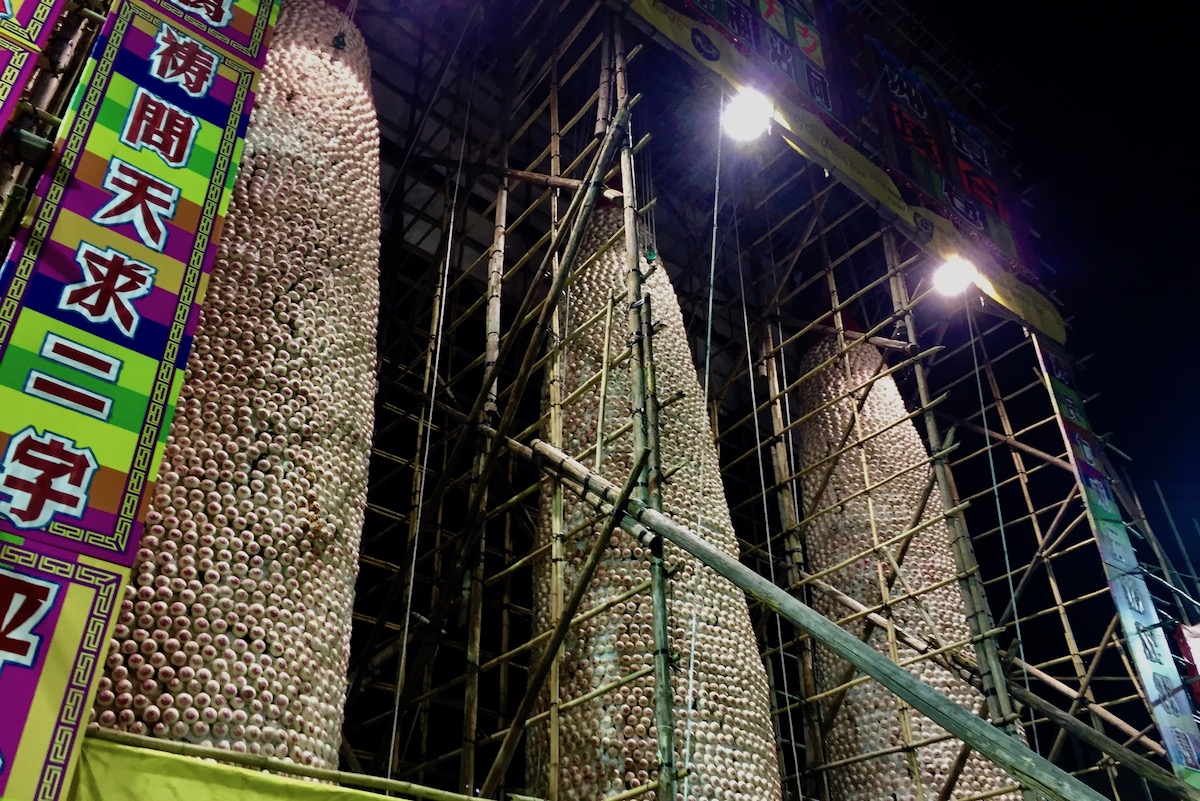Just before midnight on Sunday, the man who would be king found himself standing at the base of a 14-meter tower, surveying his ascent with laser-like focus.
A few seconds later, after a brief countdown, he was already at the tower’s summit, scrambling along with 11 other finalists to grab as many of the thousands of steamed buns attached to the structure as possible.
After three minutes, he was back at base camp, his pouch bulging with 112 buns (they’re actually made of plastic these days) worth a whopping 966 points — some 27 percent more than his next-closest competitor.

With the results in, firefighter and repeat champion Kwok Ka-ming was officially the “King of Kings,” a title introduced this year specifically for winners who have taken home the dough at least three times. (As a first-time victor, Kung Tsz-shan, this year’s women’s champ with an impressive 675 points, was ineligible for the “Queen of Queens” crown.)

Kwok’s dominating victory in the bun scramble was the culmination of a week-long local festival — dating back to the Qing dynasty — that drew thousands of tourists to the typically sleepy island of Cheung Chau on Sunday.
Despite coinciding with the Buddha’s birthday, the Bun Festival — also referred to as the “Bun Carnival” or “Jiao Festival” — is actually a Taoist tradition meant to honor several deities, chief among them Pak Tai, believed to protect the island. The abundance (forgive the pun) of buns symbolizes good fortune for the community.

Origin stories vary, but most say that the festival dates to an outbreak of the plague in the late 19th century, when an image of Pak Tai was paraded through the streets to, depending on the telling, either to placate the spirits of those killed by disease, or to bring an end to the outbreak.
That tradition continues in adorable fashion, with the Pak Tai effigies joined by children dressed as deities — as well as pop-cultural and political figures — paraded through the streets on concealed props in a procession that is arguably the festival’s centerpiece.

“This is our event,” Cheung Chau resident Hong Shek told Coconuts HK on Sunday, saying he remembered the fervor surrounding the festival when he was a child on island.
“The cute kids would be on the floats, and the generic kids would follow,” he said, quickly adding that the so-called generic kids were “not jealous,” per se, so much as aspirational.

“That’s not the right word,” he said, chuckling at the memory of his time as a “generic” kid. “We wanted to be that [kid on the float].”
The festival also includes traditional theater performances, religious observances, and a display of three traditional bun towers made of bamboo (pictured above). The old-school towers, however, were blamed in a tragic tower collapse in the late 1970s that saw many people injured, and were scrapped in favor of a steel structure when the bun scrambling competition was reintroduced in 2005.

Engineer Eddy Wene, who is originally from Nigeria but has lived on Cheung Chau with his wife for three years, said the sense of community surrounding the Bun Festival was palpable, even though he’d never had a chance to watch the competition before this year.
“Today is the day you can get anything from an indigenous Cheung Chau person,” he said, describing neighbors dropping in to hand out gifts. “My landlady came today and brought some fish. I couldn’t believe it!”






Reader Interactions